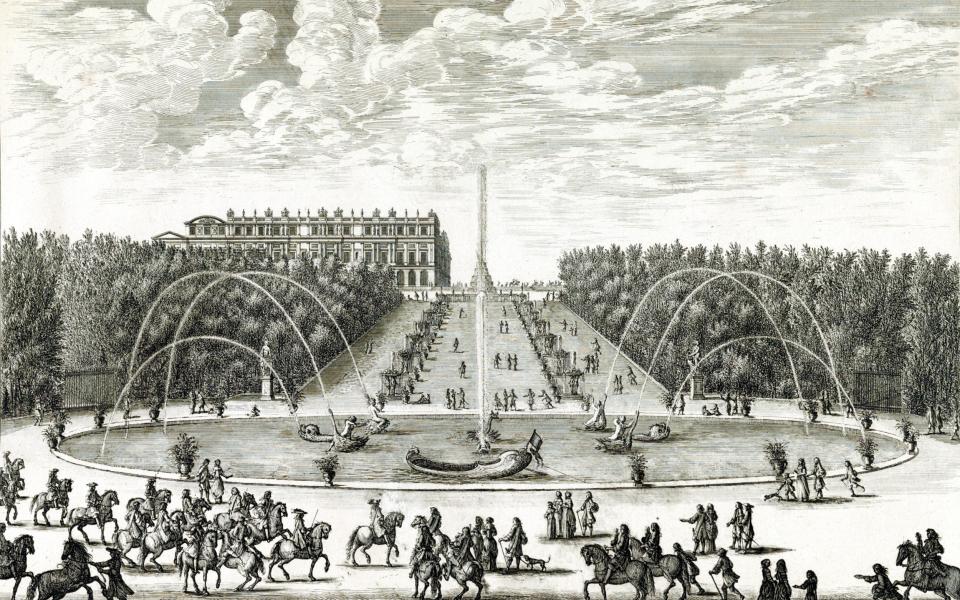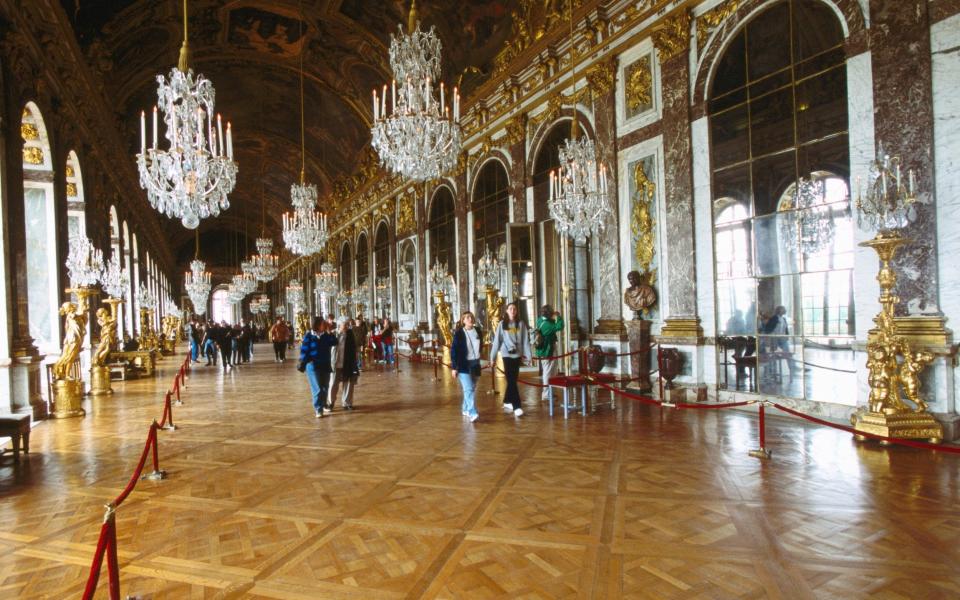The history of Versailles in six remarkable events – and how to experience it today

How do you manage a site – and a sight – as vast as Versailles? The palace alone has 2,300 rooms. And there are two more châteaux – the Petit and Grand Trianon – in the grounds. Add to that two opera houses, Marie Antoinette’s model village, acre after acre of parks and formal gardens and, on summer weekends, spectacular firework and fountain displays, and you begin to realise the extent of the sightseeing challenge.
You need time, but you also need access. And a new hotel which has opened in the grounds of the palace gives you exactly that – a 24-hour pass to the park and after-hours tours of the interiors. So you can see everything from Marie Antoinette’s bathroom to the famous long gallery – the Hall of Mirrors – devoid of the crowds, and many additional rooms that are rarely open to the public.
I spent three days there a few weeks ago, quietly getting under the skin of the place. And I came away not so much dazzled by the architecture or appalled by the folie de grandeur, but curious about the bizarre cast of characters that created and inhabited this extraordinary place and used it to fulfil their even more extraordinary fantasies – from the Sun King, Louis XIV, who was the prime motivator behind both the palace and the partying, to Louis XV and his mistress Madame de Pompadour, and the tragically naive Marie Antoinette.
For me Versailles felt like a theatre after a performance. The silent fountains, empty bedrooms, echoing halls, chapel and opera house were full of ghosts: the partygoers of the great festivities of the past. Six events in particular stand out. Moments when the great stage set of Versailles lived up to its billing.
The Party of the Delights of the Enchanted Island (1664)
When Louis XIV came to the throne, Versailles was a simple royal hunting lodge. It took 50 years, from the 1660s to the 1710s, to transform it into the vast palace set in the landscape we see now. But the 21-year-old king saw its potential from the start. Work started on the gardens in 1662, and he threw his first great party in 1664.

It was held in honour of his mother, Anne of Austria, and his queen, Maria Theresa, but he was most concerned with entertaining his mistress Louise de La Vallière. The theme was based on a story by Ariosto, shot through with sorcery and seduction. Louis played the hero, Roger, wearing a bright orange costume, mounted on a horse with a jewelled harness and followed by Apollo’s chariot. He was captured by the sorceress Alcine, whose palace was built on an island in the park’s Round Pool.
That night, the gardens were lit by thousands of torches and lanterns, while diners were entertained by a ballet. There was more ballet the next night, with the king again dressed as Roger, with dancing shepherds and shepherdesses as the supporting act.
The finale saw Alcine’s palace set ablaze as part of a firework display. The celebrations lasted a week, enlivened by horse races, lotteries and theatrical performances including the premiere of Molière’s Tartuffe.
The Great Royal Entertainment (1668)
The success of the Enchanted Island gave Louis a taste for entertaining and also enhanced his ambitions for the park and gardens. Work started on new fountains, bosquets (groves) and parterres and, four years later, he blew a third of his annual budget for Versailles on another event. The Great Royal Entertainment took place over a single night and celebrated a recent victory over Spain.
The opening of the great outdoor event was the inauguration of a new Dragon Fountain, the most powerful made so far. This was followed by a lavish tea party, and another Molière premiere – George Dandin – performed in a new theatre lit by crystal lamps. Celebrations continued into the night with a banquet, a ball and the by now traditional firework display.

Hugely encouraged, Louis upped the pace of the transformation of his party palace. The architect Louis Le Vau oversaw the construction of the king’s and queen’s apartments in 1668-70; the South Wing and the Hall of Mirrors were added in 1679-84; the North Wing in 1685-89; and the Royal Chapel in 1699-1710. This is broadly the building we see today. Meanwhile, André Le Nôtre set to work on an even greater transformation of the landscape, building the Grand Canal and hugely expanding the water features and the number of bosquets.
The Yew Ball (1745)
With the death in 1715 of Louis XIV when his heir was only five, momentum at Versailles was lost for several decades. This somewhat bizarre masked ball was the first major party Louis XV held in the château. It was supposed to be a celebration of the marriage of his eldest son to María Teresa Rafaela of Spain. But she died soon afterwards and the event has gone down in history for another reason – as the moment that Louis began his famous affair with Madame de Pompadour.
His first mistress, Mme de Châteauroux, had died the previous year and he had begun to show an interest in Jeanne Antoinette Poisson, the young wife of a civil servant, Charles Guillaume Le Normant d’Etiolles (who was not at all amused by the situation). Slightly bizarrely, once the 1,500 guests had been ushered into the Hall of Mirrors, they were confronted with eight people dressed as clipped yew trees.

One tree – who turned out to be the king – struck up a conversation with Jeanne Antoinette, who was dressed up as the goddess Diana. Royal favour had been conferred and six months later Louis bestowed on her the title of Marquise de Pompadour, confirmed her as his official mistress and built for her the Petit Trianon, a château in the grounds a mile or so from the main palace.
Marie Antoinette’s Wedding Party (1770)
The 14-year-old Austrian princess Marie Antoinette had already been married to Louis, Dauphin of France, by proxy. But her arrival from Vienna in 1770 sparked several days of celebrations at Versailles. On the first night, a banquet at the newly built Royal Opera House should have been followed by fireworks, but these were cancelled because of bad weather. The traditional bedding ceremony was held in Marie Antoinette’s chamber in the presence of the entire court. (Louis was not a natural lover and it was seven years before the marriage was consummated.)

The highlights of the next day were an operatic performance (Lully’s Perseus) followed by a ball, and the fireworks were finally let off in the gardens that evening. Plays by Voltaire, an opera by Rameau and various other ballets and entertainments kept the celebrations going for the next three weeks.
Marie Antoinette did not thrive in the febrile atmosphere of the court. When Louis XV died in 1774, Louis XVI gave his new queen Madame de Pompadour’s former Petit Trianon château. This was much more to her taste, and she soon built the Hameau – the model village in the Trianon gardens, where she could escape to a simpler, more sheltered world. Until, that is, the revolution arrived in 1789.
Ball for Queen Victoria (1855)
For more than a century after the revolution, France was plagued by political instability, and the status of Versailles as a former royal château was problematic. But although now officially a museum, it remained a spectacular stage for impressing foreign dignitaries. Napoleon III liked to use it as a showpiece – never more so than the ball for more than 1,200 guests which he held in honour of the 36-year-old Queen Victoria.

It was a hugely extravagant event. The best witness is Victoria herself, who wrote up her diary the next day.
“The Salle des Glaces [Hall of Mirrors], full of people and one blaze of light from endless lustres, wreaths of flowers hanging down from the ceiling. We went to the window to look at the illuminations, of yellow and green lamps, all along the grillage, with our initials at intervals. It had a lovely effect, reflected in the water. Then went into another room, from the balcony of which we witnessed beautiful fireworks, rockets, bouquets, girandoles etc, the like of which I have never seen before… The Finale, was a representation of Windsor Castle, in fireworks. I danced the first Quadrille with the Emperor... It was 2.30am when we got home, most delighted with our evening.”
The Versailles Settlement (1919)
In 1919, history turned a little sour for Versailles. Its name will forever be associated with one of the greatest diplomatic disasters of the 20th century. The treaty, which attempted to re-establish peace and prosperity at the end of the First World War, was signed in the Hall of Mirrors. Imposed on a bitter and resentful Germany, the Versailles Settlement turned out to be riddled with flaws and is often blamed for the rise of National Socialism.

The heads of state of France, Britain, the United States and Italy were present for the signing, along with representatives of 28 other nations. It was a solemn occasion, with no music and little festivity. Compared with the great gatherings of the past, this must have felt more like a wake than a celebration.
Nevertheless, the partying and the power plays still continue at Versailles. In 1957, a 31-year-old Queen Elizabeth was received here on her first state visit to France. President Kennedy also stayed, and President Mitterrand used the Grand Trianon Palace to host the 1982 G7 summit. Mainly, Versailles is now a palace of the past, but what an extraordinary past it was.
Staying on the inside
Le Grand Contrôle is the former state treasurer’s mansion, which was built just inside the walls of the park surrounding the Château de Versailles. A €50 million (£43 million) refurbishment has transformed it into a hotel, which opened this summer with 14 sumptuous bedrooms.

Though it is restored in the style of the 1780s and furnished with appropriate antiques, staying isn’t all about worthy historicism. There is a great sense of fun about the place. Staff dress up in 18th-century costume, bow to guests on arrival and put on a bit of a show at dinner – all with just enough lightness of touch to prevent it becoming naff or twee.
The real USP, however, is the access it gives you. It’s just inside the estate walls (overlooking the Orangerie gardens) and you have direct access to the grounds at all hours, and the hotel supplements this remarkable privilege with daily out-of-hours tours included in the room rates.
Airelles Château de Versailles Le Grand Contrôle (airelles.com); double rooms from £1,450, breakfast included. Read the full review here, plus more recommendations on where to stay with our guide to the best hotels in France and the best hotels in Paris.


